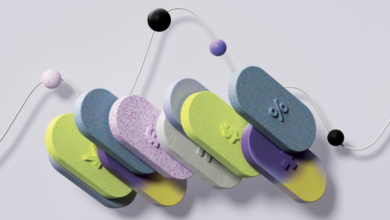Before the outbreak of Covid, AI-enabled robots were tentatively entering the retail sector — both in store and out of sight in warehousing and distribution facilities. The sudden need for social distancing however dramatically sped up the adoption of automation and robotics across the industry.
The shift in need and perception forced by the emergence of Covid 19 accelerated retailers into a new way of doing business. By improving efficiency and proving their ROI, public-facing robots consistently met the mark in a time of need and because of this, devices such as autonomous mobile robots (AMRs) have become increasingly visible in retail environments.
Based on the changes retailers are making to meet the new normal, below are a series of ways that I believe the increased deployment of AI-powered robotics will alter the retail landscape in the near future.
Robots Are Now Here to Stay
Only a few years ago, self-driving machines — such as autonomous floor scrubbers and vacuums — could be found in dynamic public areas and workplaces, but were rare enough to be regarded as a novelty.
But after a global pandemic and supply chain crisis, this scenario has radically changed. As cleaning has become a top concern, major retailers and grocers, such as Walmart, Kroger and Sam’s Club, are using more robotic cleaners than ever to support staff and spur efficiency. According to Brain Corp data, retailers used robotic scrubbers by nearly 10% more in 2020 compared to the year before. Altogether, their BrainOS®- powered robots tallied up an impressive estimated 7.6 million hours of extra productivity for commercial workers to date.
With robots shouldering more manual tasks than ever before, retail staff has been able to reclaim time that can be used to tackle higher value cleaning tasks — such as disinfecting high-touch surfaces — and helping with other retail store operations, including serving customers. With an increased need for visible cleanliness practices, we can expect automation to extend its reach even further across the retail sector.
Savings Beyond the Price Tag
AI-equipped robots not only drive cost savings. From the outside, robots improve brand value by visually signifying a business’s commitment to efficient processes, smart hygiene, and innovation in general. When consumers spot a robot doing the rounds in store, they are assured that management has made certifiable efforts to make the space cleaner, safer, and smarter.
As a greater number of retail companies roll out robots in their stores, we can expect to see the industry at large evaluate innovative technologies with a more holistic approach to ROI, one that goes beyond mere spreadsheet savings.
Data Improves Performance
Robots are only not limited to tackling undesirable work; they also generate usable data whilst they go about their cleaning duties. Features such as email reporting and cloud-based user portals generate near real-time on-the-job data that managers can use to inform better in store operations.
In the case of autonomous floor scrubbers, cleaning operations can be tracked and data collected on multiple performance areas, such as surface area cleaned, the number of routes completed, and percentage of autonomous usage versus manual usage. Heat maps showing areas covered give users an idea of what cleaning has taken place.
With high-resolution data in hand, managers can optimize routine cleaning performance, which in turn allows their organisations to better conform to compliance standards. In the near future, a greater number of retail operators will use data to shape their operations, relying upon clear “proof of work” metrics to demonstrate work undertaken. Centralised and cloud-based software platforms, connected to robots on the ground, will come to dominate task management, allowing multiple automated retail applications from different manufacturers to be managed all in one place.
Managers will have entire robotic fleets at the tips of their fingers, aided by a combination of centralised data hosting and reporting, built-in safety protocols, connected user experiences, and automatic software upgrades. Unified AI in the workplace will give users more control over their work than was previously thought possible. But this does not necessarily require more technical expertise than was previously the case.
User-Friendly Robotics
Up until now, robots were deployed primarily in warehouses and factories. In these environments, they were the responsibility of specialised technical support, who alone had the knowledge to operate and maintain such devices.
In order for robots to be realistically scaled across most businesses, such as retail and supermarket chains, they must be made easy-to-use for non-technical staff.
Specifically, robots destined for dynamic retail settings must come with intuitive user interfaces, graphical reporting, and easy deployment instructions; without these features employees will more likely struggle to integrate their own working practices with their new robot colleagues.
Simplified user experiences will become an essential prerequisite for all standard shop floor robots.
The past two years have been a watershed period for robotics, owing to an unprecedented threat to global health. Within a span of a few months, robots became integral to the retail business, and have become an increasingly ubiquitous occurrence in some major shopping locations. I believe we have seen the tipping point and that this trend will gather pace in the coming years, sustaining itself long into the future.





